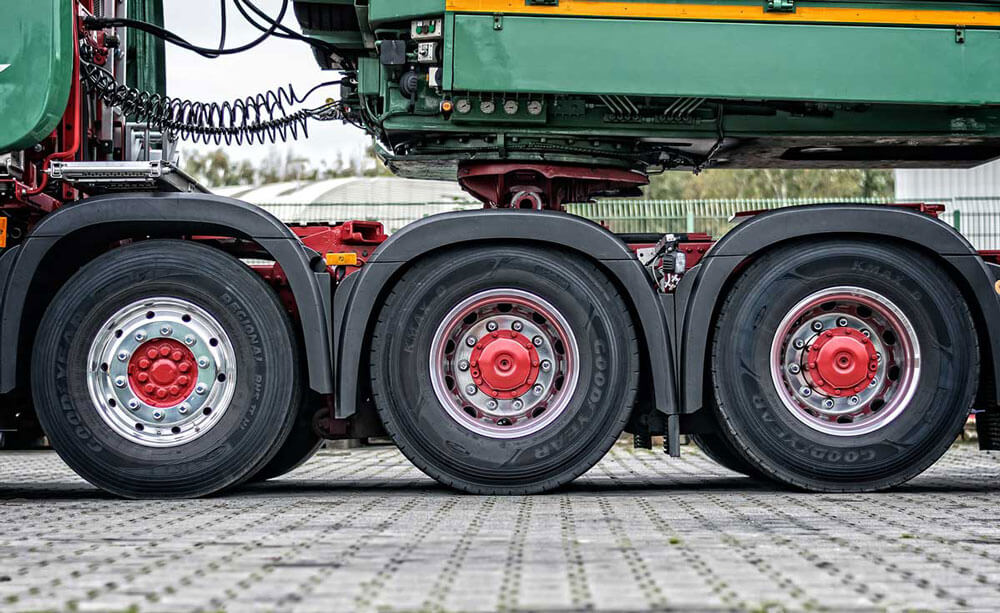Electronic Logging Device (ELD) Mandate: What You Need to Know.

Within the past three years, there has been a change in how drivers log their work days, with the establishment of the new mandate of an electronic logging device (ELD). The ELD works with the onboard computer in the truck to log driving time for a more accurate and dependable record of what happened on the road.
What is an ELD? And Why Do Truckers Need to Install it?
An ELD records the date and time a truck is turned on, total engine running hours, vehicle miles, locations stopped at and driven through, the driver’s ID information, and any malfunctions detected by the truck’s onboard computer.
As far as location logging, it is automatically recorded by the ELD when the driver changes his duty status, and when the engine is started or stopped. During driving, GPS locations are recorded at 60-minute intervals for ease of tracking of employees on the road.
Please note that ELDs do not allow for manual editing of driving time, nor do they allow automatic recorded events to be changed, just annotated.
They do, however, allow for other edits of records. Keep in mind that the device also makes a log of who made the edit, when it occurred, and also the reason for the edit must be written in the annotations.
This edited history is displayed to DOT inspectors. So be sure to get it correct.
Also important to note, is that if for whatever reason, the ELD fails to work or is malfunctioning, drivers can show a printout or the actual display of their unit and be compliant according to the mandate.
According to the Federal Motor Carrier Safety Administration (FMCSA), the congressional law was written with the intent to make a safer work environment for drivers. It allows companies to accurately track, manage, and quickly share records of trucking status with officials.
This law applies to commercial buses as well as trucks, and to drivers who live in Canada and Mexico.
Truckers who are not required to use an ELD, are those who use paper logs less than 8 days during a 30 day period, those who have a vehicle made prior to the year 2000, and those who are drive-away or tow-away drivers.
When does the ELD Mandate go Into Effect?
The rule goes into effect December 18, 2017.
According to the FMCSA, if a vehicle already has an Automatic Onboard Recording Device (AOBRD) installed, it can be used until December 16, 2019. However, this is the only exemption allowed, as the mandatory use of ELDs has been grandfathered for 2 years for those with existing AOBRDs.
Carriers and drivers who had Automatic On Board Recording Devices (AOBRDS) installed prior to 2017 are allowed to keep using them until December 16, 2019. After that date, all motor carriers and drivers must use ELDs.
Keep in mind that as of December 16, 2019, all drivers must use ELDs registered with FMCSA.

What Led to This Ruling?
Concern for the safety of truck drivers and the general population on the road led to the federal mandate of ELDs, which accurately logs driving hours, and forces employees (and employers) to work within the federally allotted time frames.
Too many fatigue-related trucking accidents caused by overworked employees is the number one factor in this federal ruling.
Many employers have set unreasonable goals, with unrealistic schedules that pressure truck drivers to not only rush a delivery but to do it to the detriment of their own physical health.
A commercial truck company’s exploitation of a driver’s hours of service (HOS), forces them to work long shifts with no breaks. That, combined with lack of sleep, not only causes physical exhaustion but mental exhaustion as well.
Both conditions lead to only one end: an accident that can seriously injure or kill someone.
Since 2007, there has been a 20% increase in fatigue-related truck accidents that resulted in injury or fatality. The FMCSA and the National Highway Traffic Safety Administration (NHTSA) conducted the Truck Crash Causation Study, which examined the reasons for serious crashes involving commercial trucks. The study found that the three main causes were speeding, being intoxicated, and driver fatigue. You can read about the study here.
Fatigue causes a serious reduction in motor skill reaction times and falling asleep at the wheel, both of which contribute to catastrophic, and very expensive, traffic accidents.
In order to reduce the number of truckers who are staying on the road longer than their bodies can handle, the ELD Mandate was formed.
Why is Driving Fatigued a Bad Thing?
For a better picture, a trucker working while fatigued drives just as bad as someone who has been drinking alcohol.
According to the Adelaide Centre for Sleep Research, driving while being awake for 17 hours or more causes a person to face the same risk of accident as that of a drunk driver.
They are twice as likely to have an accident as someone who has not been drinking at all.
A truck driver who has been awake for 24 hours does even worse. The center study revealed that these drivers are seven times more likely to have an accident.
Falling asleep at the wheel, poor judgment in traffic, speeding are just some of the main causes of fatigue-related accidents. Hours of Service laws were put in place to reduce these kinds of transportation accidents. However, they have not been adhered to as well as lawmakers would have liked. This is where the ELDs come in. They help track and ensure that truckers are following the federal work rules. (Source: Transport Accident Commission “Fatigue Statistics”)

What Effect Will This New Law Have on Trucking Work Hours?
There are federal regulations in place that limit the amount of time a truck driver can log per week, 11 hours of driving carrying cargo followed by 10 consecutive hours off-duty. This allows for a driver to get enough sleep and rest to safely combat the hazards of the road.
Our Drivers Use Paper Logs. Why Aren’t They Still Accepted?
Paper logs can be inaccurate, and they are easy to manipulate, which is why the installation of an electronic logging device was ruled to be necessary.
Using an ELD removes the stress and worries from drivers having to fill out paper logs properly. It also saves drivers time by removing that task from their daily routines.
Data is quickly transmitted from the ELD via wireless web services such as telematics, Bluetooth devices, and USB 2.0 devices. And a driver’s logs can be quickly printed upon request for physical record filing.
More information about the technical requirements can be found on the FMCSA website.

Compliance with the Federal Mandate Law
It is important to note that logs manually entered into smartphones and laptops do not count as ELDs. However, smartphones and other wireless devices can be used, if they are connected to the engine and have the ability to automatically record movement and speed data.
Apps or ELDs that plug into a vehicle’s diagnostic port and run on an iPad or tablet do qualify as mandated ELDs according to the law.
For an example of an app go here.
Protection from Harassment
One of the goals of the ELD mandate is to protect truck drivers from harassment by motor carriers. The FMCSA defines harassment as when a motor carrier commits an action that causes the driver to violate the hours of service rules, such as forcing them to work without taking breaks or driving for longer than 11 hours at a time, without a 10-hour break between shifts. It also considers forcing a driver to work when their ability or alertness may be impaired by fatigue or illness to be harassment. The information logged in the ELD and other devices is used to file an action of harassment against the motor carrier.
This law is to ensure that all drivers are treated fairly, and not forced to work on the road when they can put their own, and other people’s lives, at risk.
What Do Drivers Need to Do?
Truckers must be able to log on to the device, and select Driving, Off-duty, On-duty Not Driving, and Sleeper Berth statuses. And they must be able to easily read the Record of Duty Status (RODS) from the device at any time so that they can keep track of their work hours.
They must be trained to use the ELD, including how to annotate, edit and certify RODS, as well as collect any and all supporting documents.
Drivers also need to know how to display and transfer data to officials upon request.

Personal Use
Any authorized personal use is recorded in the logs and is considered off-duty time. Such personal use includes travel from the driver’s home to a terminal, from a terminal to a hotel, or to restaurants. If a driver is dispatched directly from home, they are considered on-duty.
Other Statuses
Yard Moves, bad weather (adverse operations) conditions, and oilfield operations are all special driving categories that can be recorded into ELDs.
Using an ELD
A driver’s account is made with their driver’s license number and State that it was issued in. This account ID is used for daily logins on the ELDs. Only one account is allowed per driver. If the driver is an exempt driver, the status must be changed by the motor carrier.
They must also keep track of their Hours of Service (HOS), as not all ELDs have a warning message feature that displays when they are reaching their daily HOS limits. The law does not require this feature, so not all devices have it.
The ELDs must also display the data for co-drivers in a team driver situation.
Now What?
The Electronic Logging Device Mandate was placed into effect in 2015 and gave drivers and motor carriers two years to become compliant.
Now that the mandate rule is in effect, drivers and carriers must be aware of the changes in their workplace, to avoid being fined or penalized, and to ensure that truck drivers are keeping the roads safe.
For more information contact the FMCSA at [email protected] or call them at 1-800-832-5660.

